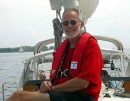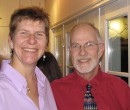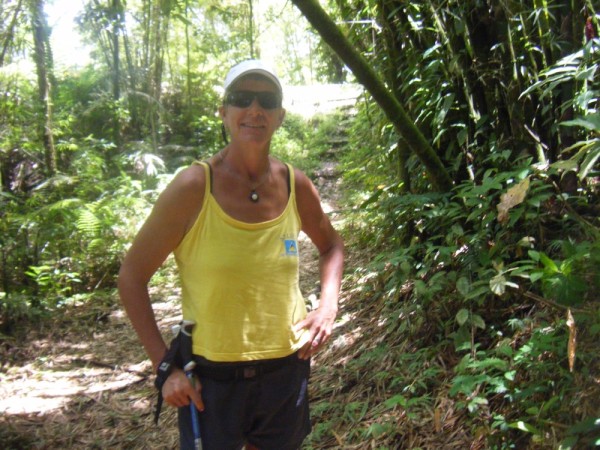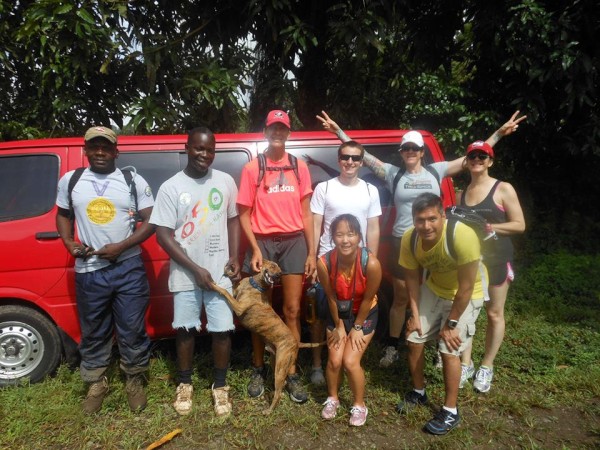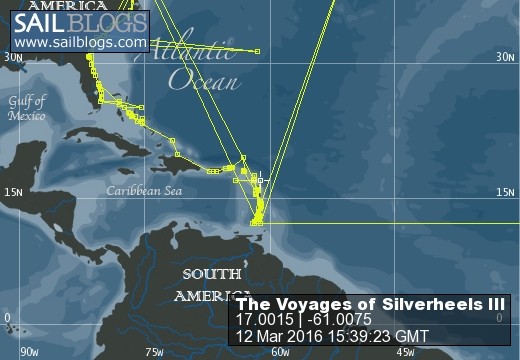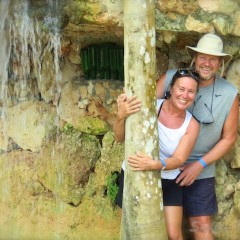
The Voyages of s/v Silverheels III
...a virtual ship's logbook, and some thoughtful (unabashed?) reflections on our sea-going experiences.
04 November 2017 | Somewhere in the Eastern Caribbean
18 October 2017 | Le Marin, Martinique in the French West Indies
25 January 2017 | Gosier, Guadeloupe
19 January 2017 | Le Gosier, Guadeloupe
19 January 2017 | Le Gosier, Guadeloupe
19 January 2017 | St Pierre, Martinique
06 January 2017
01 January 2017 | Fort Du France, Martinique
28 December 2016 | Grand Anse d'Arlet, Martinique
24 December 2016
14 November 2016 | St Anne, Martinique
06 October 2016 | St Anne, Martinique
04 October 2016
20 July 2016 | Rodney Bay, St Lucia
15 June 2016
15 June 2016
13 June 2016
13 June 2016 | Grand Anse d'Arlets
13 June 2016 | Grand Anse d'Arlets
09 May 2016 | Deshaies, Guadeloupe
Petite Martinique First Impressions
17 September 2014 | Petite Martinique
Lynn
Petite Martinique is one of the three official Sister Islands that comprises the island country of Grenada. The “main” island of Grenada and Carriacou make up the rest of the triple crown. Petite Martinique and Carriacou could have just been easily lumped into the Grenadines. There are a smattering of other rocks, mostly too small for habitation (unless one was in Georgian Bay cottage country).
When you walk off the main dock of the island, there is a “Welcome to Petite Martinique” sign, complete with some local fact. The island has an area of 590 acres, an approximate population of 1000 and the main economic mainstay was left blank. The school, just a little bit farther in at the entrance to the main road, also has bits and pieces of info about Grenada (the National Bird is the Grenada Dove, and the Bougainvillea is the National Flower).
We first arrived at the fuel dock where there is a place to die dinghies. As I was pulling out the chain to lock it (this pretty much ensures that the dinghy is there, regardless of painter issues or someone thinking that they had a better use for it that we do) the guy at the fuel area yelled “Hey, no locking!” Then as I lifted a garbage bag “No garbage drop off here!” Wow, welcome to the island. No explanation, no way to soften the comments, just “Don’t do that!” We took the dinghy to another dock where we locked it unmolested, and was told by other locals just to use any garbage container we wanted. If the guy had explained that the garbage gets picked up twice a week and taken off-island, or that it was a private dock and they may have to move the dinghy, it would have made it a little easier to take. As it was, we both had an unpleasant taste in our mouth about our “welcome” to the island.
We decided to head to the north side of the island first. As Ken said “It’s the shortest way, then we can go the longer way south”. We got to the end of the road and kept on walking on the beginnings of a road (it was somewhat graded). Then we kept walking on the relatively easy hiking terrain to get to a hill to get a good view and some pictures. It looked kind of interesting farther south, so we continued walking, eventually following goat paths, until we got back onto the main road at the south end. We had not planned for it, but except for wishing for some water, the 2.5 hour island circumnavigation by foot was quite nice. We didn’t kill ourselves by pushing hard, and stopped to enjoy the scenery and take pictures frequently. We really did follow goat paths, as they know the easier places to get up some hills, and across some of the crevices in the rocky terrain.
The windward, or east, coast of Petite Martinique is not inhabited. The landscape speaks to a volcanic genesis, with the remains of lava flows and volcanic rock strewn about. It varies from fairly fertile to completely arid, with just a couple of hopeful plants clinging to the mud. Sometimes it was pastoral, then we would pass over a rise and be in a moonscape. Offshore we could see the reefs, as well as the other islands to the north of us, including the Tobago Cays. The visibility was very good for us. The water would vary from the deep blue of the deeper water to the turquoise that warns of shallower depths. The reefs that originated Carriacou’s Aboriginal name (island surrounded by reefs, which is much better than crab louse) were in full view on her Windward side.
The roads of PM are not very wide, but since the island is not large at all, there is not a great deal of traffic. There are a few cars, some golf carts, and one or two tractor-like things with front-end loaders that move whatever has to be moved, whether groceries or building supplies. We saw one taxi, a pickup truck. It made Ken think a little of the Saints. Feet are the primary source of transportation. Considering how expensive electricity would be here, it is unlikely electric vehicles would be an asset.
We stopped at a little watering hole and each downed a beer. Our chat with the proprietor and one of her regulars was interesting. While oildown may be Grenada’s national dish, the denizens of PM tend to go for a plate with stewed fish, pork or chicken (usually fish); coo-coo (a type of polenta); rice balls and maybe a little salad. My memory tells me they call it something like “sakawa”. As she put it, Grenadians tend to use lots of provision (root vegetables, breadfruit and cooking bananas), but they aren’t as available on the little rock they call home.
I was hoping to get some eggs, and was directed to a store that closes for the noon hour, which, of course, we arrived at during that time. We wandered back to a little place that we saw that had a menu placard on the front porch, advertising rotis and sandwiches for sale. Ken and I both had a chicken roti, with no disappointments from us! Theresa (or Joycelin) was a sweet hostess who even put a big plastic juice bottle of ice water on the table for us. She had some trouble with the propane tank from her stove, but still managed to get us fixed up with a very good and inexpensive lunch. She proudly showed us pictures of some of her 7 children; her husband was a sea Captain who would be gone for up to a year at a time – when he came home, she became pregnant!
From Theresa, we found that education beyond elementary school provided a small challenge for PM families. There is no secondary school on the island, so there are a couple of options for the families. 1) Send the kids by boat to Carriacou 2) Ship the kids off to relatives on Grenada for the school year 3) Move the whole family to Carriacou or the main island if there are enough high school students in the family to make it practical (this is what Theresa did, relocating to Grenada for a while).
The lady with the eggs was open when we returned, but she didn't have any eggs available. She gets them from her own hens, so I guess she is going to see what the girls have been up to.
It is a neat little island. Not particularly touristy, at least this time of year, and the people are lovely to chat with…. Except for the dude at the gas dock.
When you walk off the main dock of the island, there is a “Welcome to Petite Martinique” sign, complete with some local fact. The island has an area of 590 acres, an approximate population of 1000 and the main economic mainstay was left blank. The school, just a little bit farther in at the entrance to the main road, also has bits and pieces of info about Grenada (the National Bird is the Grenada Dove, and the Bougainvillea is the National Flower).
We first arrived at the fuel dock where there is a place to die dinghies. As I was pulling out the chain to lock it (this pretty much ensures that the dinghy is there, regardless of painter issues or someone thinking that they had a better use for it that we do) the guy at the fuel area yelled “Hey, no locking!” Then as I lifted a garbage bag “No garbage drop off here!” Wow, welcome to the island. No explanation, no way to soften the comments, just “Don’t do that!” We took the dinghy to another dock where we locked it unmolested, and was told by other locals just to use any garbage container we wanted. If the guy had explained that the garbage gets picked up twice a week and taken off-island, or that it was a private dock and they may have to move the dinghy, it would have made it a little easier to take. As it was, we both had an unpleasant taste in our mouth about our “welcome” to the island.
We decided to head to the north side of the island first. As Ken said “It’s the shortest way, then we can go the longer way south”. We got to the end of the road and kept on walking on the beginnings of a road (it was somewhat graded). Then we kept walking on the relatively easy hiking terrain to get to a hill to get a good view and some pictures. It looked kind of interesting farther south, so we continued walking, eventually following goat paths, until we got back onto the main road at the south end. We had not planned for it, but except for wishing for some water, the 2.5 hour island circumnavigation by foot was quite nice. We didn’t kill ourselves by pushing hard, and stopped to enjoy the scenery and take pictures frequently. We really did follow goat paths, as they know the easier places to get up some hills, and across some of the crevices in the rocky terrain.
The windward, or east, coast of Petite Martinique is not inhabited. The landscape speaks to a volcanic genesis, with the remains of lava flows and volcanic rock strewn about. It varies from fairly fertile to completely arid, with just a couple of hopeful plants clinging to the mud. Sometimes it was pastoral, then we would pass over a rise and be in a moonscape. Offshore we could see the reefs, as well as the other islands to the north of us, including the Tobago Cays. The visibility was very good for us. The water would vary from the deep blue of the deeper water to the turquoise that warns of shallower depths. The reefs that originated Carriacou’s Aboriginal name (island surrounded by reefs, which is much better than crab louse) were in full view on her Windward side.
The roads of PM are not very wide, but since the island is not large at all, there is not a great deal of traffic. There are a few cars, some golf carts, and one or two tractor-like things with front-end loaders that move whatever has to be moved, whether groceries or building supplies. We saw one taxi, a pickup truck. It made Ken think a little of the Saints. Feet are the primary source of transportation. Considering how expensive electricity would be here, it is unlikely electric vehicles would be an asset.
We stopped at a little watering hole and each downed a beer. Our chat with the proprietor and one of her regulars was interesting. While oildown may be Grenada’s national dish, the denizens of PM tend to go for a plate with stewed fish, pork or chicken (usually fish); coo-coo (a type of polenta); rice balls and maybe a little salad. My memory tells me they call it something like “sakawa”. As she put it, Grenadians tend to use lots of provision (root vegetables, breadfruit and cooking bananas), but they aren’t as available on the little rock they call home.
I was hoping to get some eggs, and was directed to a store that closes for the noon hour, which, of course, we arrived at during that time. We wandered back to a little place that we saw that had a menu placard on the front porch, advertising rotis and sandwiches for sale. Ken and I both had a chicken roti, with no disappointments from us! Theresa (or Joycelin) was a sweet hostess who even put a big plastic juice bottle of ice water on the table for us. She had some trouble with the propane tank from her stove, but still managed to get us fixed up with a very good and inexpensive lunch. She proudly showed us pictures of some of her 7 children; her husband was a sea Captain who would be gone for up to a year at a time – when he came home, she became pregnant!
From Theresa, we found that education beyond elementary school provided a small challenge for PM families. There is no secondary school on the island, so there are a couple of options for the families. 1) Send the kids by boat to Carriacou 2) Ship the kids off to relatives on Grenada for the school year 3) Move the whole family to Carriacou or the main island if there are enough high school students in the family to make it practical (this is what Theresa did, relocating to Grenada for a while).
The lady with the eggs was open when we returned, but she didn't have any eggs available. She gets them from her own hens, so I guess she is going to see what the girls have been up to.
It is a neat little island. Not particularly touristy, at least this time of year, and the people are lovely to chat with…. Except for the dude at the gas dock.
Comments
| Vessel Name: | Silverheels III |
| Vessel Make/Model: | Hinterhoeller, Niagara 35 Mk1 (1979) |
| Hailing Port: | Toronto |
| Crew: | Lynn Kaak and Ken Goodings |
| About: | After five summers and winters living on our boat in Toronto Harbour, we've exchanged those cold Canadian winters for Caribbean sunshine. "Nowadays, we have ice in our drinks, not under the boat." |
| Extra: |
The completely biased and unabashed musings from the crew of Silverheels III
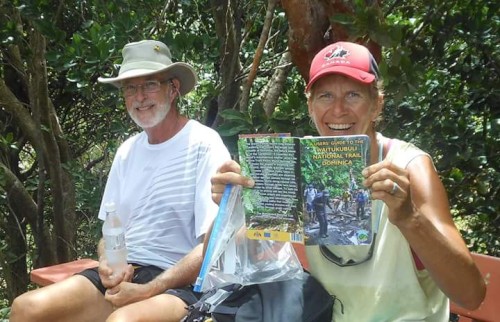
Who: Lynn Kaak and Ken Goodings
Port: Toronto










